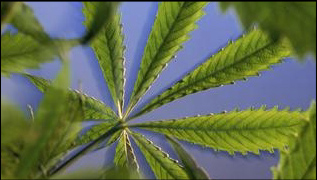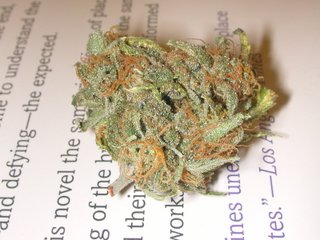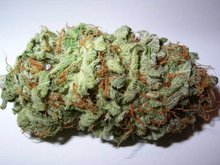In the stoner stereotype, pot smokers and dying brain cells go hand in hand. However, new research suggests the situation may be more uplifting than that. A drug that functions as concentrated marijuana does may spur neurogenesis, the process by which the brain gives birth to new nerve cells.
Previous research had suggested that neurogenesis happens only in select locations in the brain, such as the hippocampus, a region involved in learning and memory. Some studies have shown that this process is inhibited by most illicit drugs, such as cocaine, heroin, and methamphetamine. However, says Xia Zhang of the University of Saskatchewan in Saskatoon, marijuana's effect on neurogenesis has not been clear.
He and his colleagues started investigating this mystery by searching cell surfaces in live, cultured slices of rat hippocampus for receptors that respond to marijuana and a few other similar drugs, called cannabinoids. They reasoned that if marijuana affected neurogenesis in the hippocampus, then cells in that area must have a way to recognize the drug. Sure enough, 95 percent of hippocampus cells responsible for neurogenesis showed evidence of cannabinoid 1 (CB1) receptors, one of two receptors that respond to cannabinoid drugs.
Next, Zhang's team incubated samples of rat hippocampus with a solution containing HU210, a drug that stimulates CB1 receptors with a strength 100 times greater than that of pot. Other rat-hippocampus cells were incubated with the same solution minus the drug or with AM281, a drug that blocks CB1 receptors. After 2 days, the researchers found a significant increase in the number of new brain cells in the samples incubated with HU210, but no significant increase of such cells in the other samples.
Finally, the researchers injected adult rats with various doses of HU210. A single high-dose injection seemed to make no significant difference in the number of new nerve cells. However, animals injected with high daily doses of the drug over the course of 2 weeks had about 30 percent more newborn nerve cells than did rats given AM281 or a solution without either drug.
Animals given the 2-week course of HU210 also showed less anxiety and depressionlike behavior than did rats not given the drug. When the researchers irradiated the rats' hippocampi with X rays, which kill off new neurons, animals given HU210 responded to these tests much as did animals that didn't receive the drug. These results suggest that, while these new neurons probably don't increase intelligence, they could be responsible for antianxiety and antidepressive effects, says Zhang.
He and his team report their findings in the November Journal of Clinical Investigation.
While data suggesting that cannabinoid drugs can accelerate neurogenesis are "interesting and potentially promising" it's too early to tell whether high doses of marijuana over long periods have a similar effect on depression and anxiety in people, says Ron Duman, a neuroseientist at Yale University. "There is very little clinical evidence demonstrating that cannabinoid administration produces an antidepressant response," he says.
COPYRIGHT 2005 Science Service, Inc.
COPYRIGHT 2005 Gale Group



